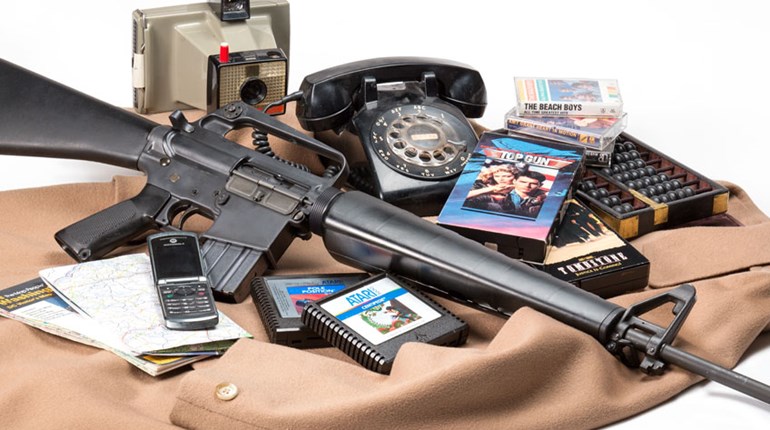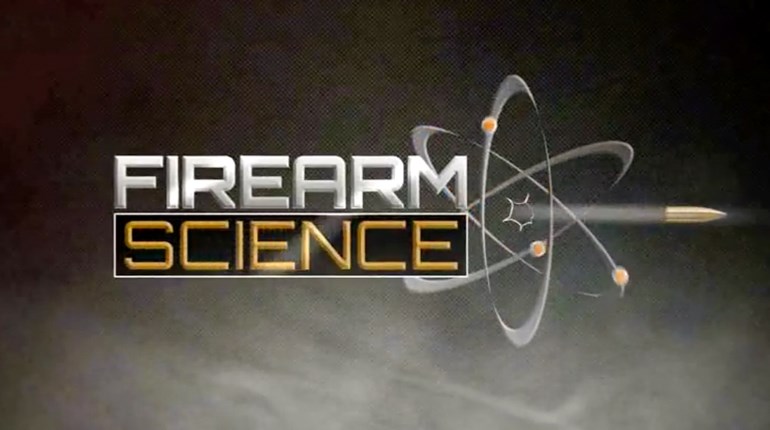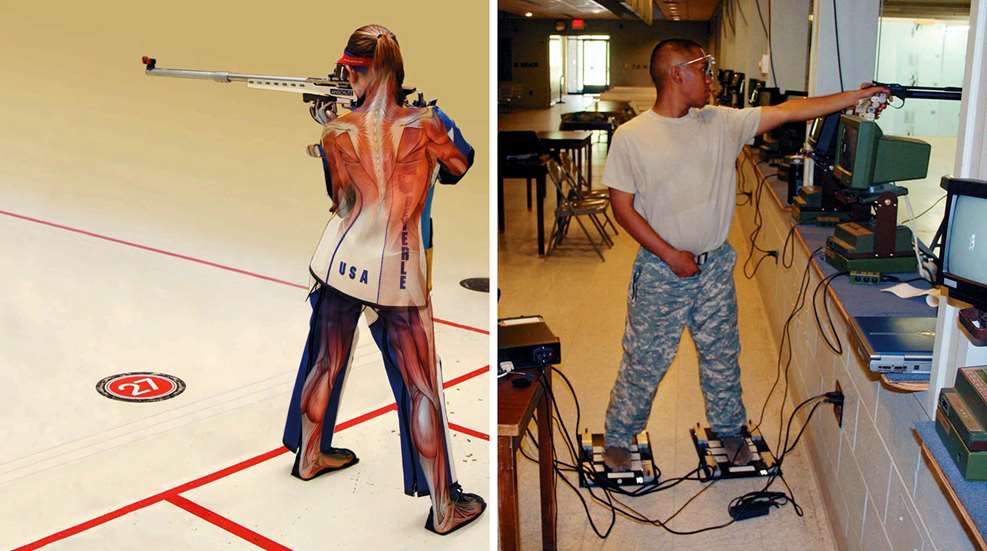
Dr. Cathy Arnot, DPT, FAAOMPT, MTC, OCS is a clinical assistant professor in the Doctor of Physical Therapy Program at the University of South Carolina. A graduate of Baylor University with a Masters of Physical Therapy, she obtained her doctorate in Physical Therapy from the University of St. Augustine in 2003. In addition to teaching at the university, she supports the Olympic shooting team with physical therapy interventions. Her dog-eared passport allows her to travel to World Cups, World Cup Finals, World Championships, Spring/Fall Selection matches, Nationals and the Olympics in support of her shooters.
Dr. Arnot, why so much emphasis on a shooter’s posture?
Postural alignment is important for match endurance, a stable shooting platform and overall health. We examine such things as postural alignment, flexibility, strength, postural stability, biomechanics and the evaluation and treatment of acute and chronic musculoskeletal impairments. Certain body type variations can even predispose a competitor to injury. For example, misalignment of the foot and ankle can lead to disorders of the ankle, shin, knee, hip and lower back. The most common of these is “flat foot” or pes planus—a condition in which the arch or instep of the foot collapses and comes in contact with the ground. Typical treatment for flat feet includes assessment of muscle length, flexibility exercises and the fabrication of orthotics to correct the flattened arch. A properly fitted orthotic insert can stabilize your shooting position and relieve you of discomfort from prolonged standing.
Please share some of your most recent findings in the area of postural stability.
It might surprise you to learn that flexibility assessment is critical for the non-moving, standing shooter. For example, a right-handed rifle shooter must have enough extensibility of the hip flexors, the left iliotibial band (upper thigh), right hip adductors, spinal musculature and left wrist flexibility to assume a position that results in the least muscle activation. Ideally, shooters should be able to completely relax in their standing position. Tightness in any of these areas can result in unnecessary and unwanted activation of trunk or lower-extremity muscles to maintain a balanced standing position. As an overall assessment tool, I routinely check the flexibility of the hamstrings, deep hip flexors, quadriceps, hip extensors (gluteus maximus), hip internal and external rotators, upper thigh, calf muscles, chest (pectorals), shoulder-rotator cuff, biceps, triceps, wrist and finger muscles.
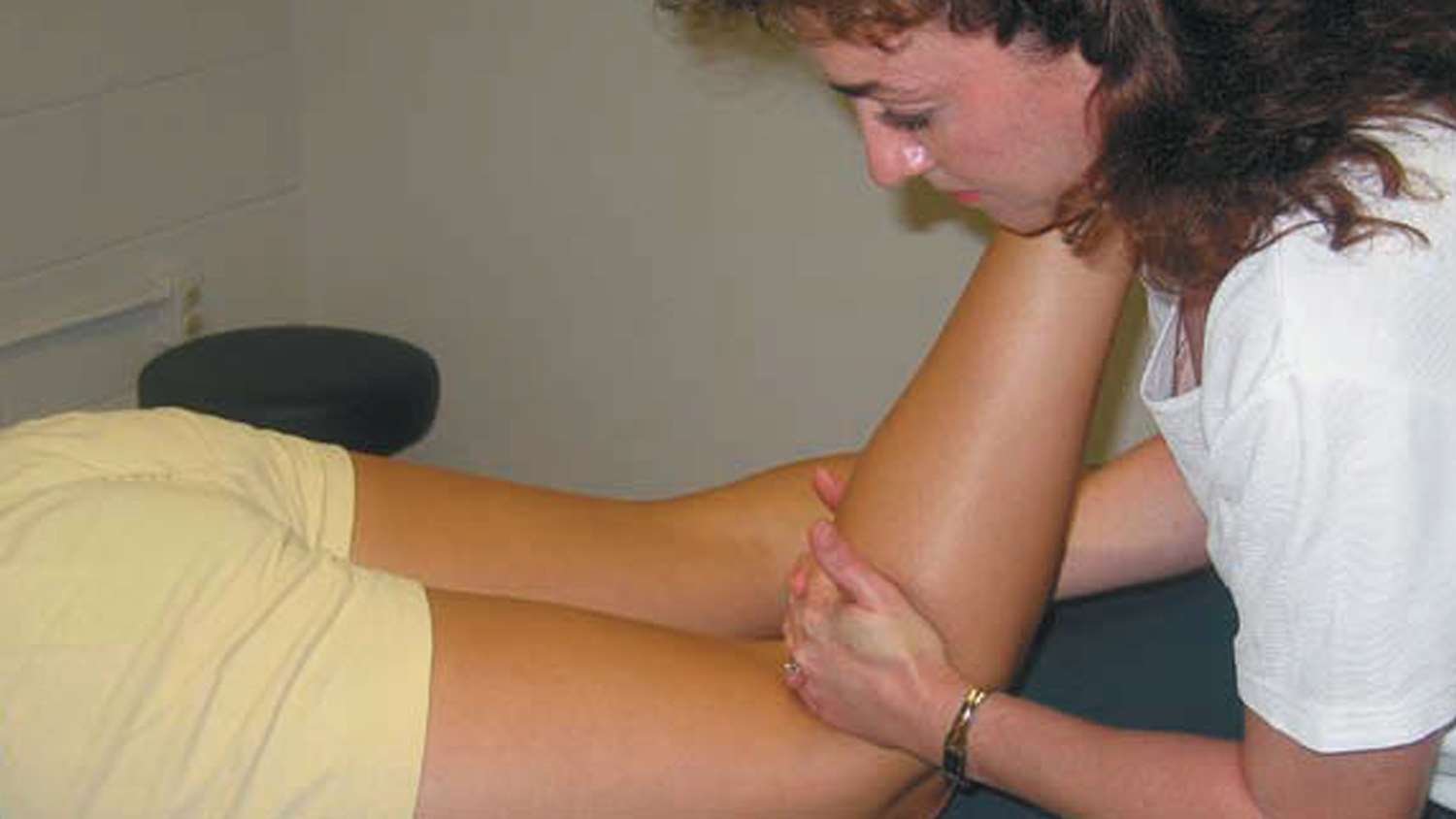
Very little research has been conducted on rifle shooters and injury prevention. One study performed in the 1980s found a positive correlation between having a tight iliotibial band (upper thigh muscle) and lower back pain. Therefore, I give ITB stretches to all rifle shooters. Strength is another important consideration. For rifle shooters, endurance and isometric strength are more important than “bulking up.” Strength training that involves high repetition with low weights is preferable to low repetition and higher weights.
For pistol shooters, both strength and endurance are important. Of particular importance is strengthening their trapezius, deltoid, rotator cuff and wrist extensors of the dominant arm. Unlike rifle, I have the pistol shooters alternate between high reps, low weight exercises for endurance and high weight, low reps for strengthening. Pistol shooters are very prone to rotator cuff tears from overuse, so this is an important preventive measure.
I also assess the strength of each shooter’s core (deep abdominal and lower back muscles), arm muscles, trunk muscles and lower body muscles. For rifle and pistol shooters it is important to have strength in all of these areas to maintain position for long periods of time, to maximize stability so that postural sway is minimized and for injury prevention.
“Strength training for rifle shooters that involves high repetition with low weights is preferable to low repetition and higher weights.”
Balance and coordination are also addressed during treatment. Typically I assess the shooters’ single leg balance with the eyes open and closed. A normal closed-eye score would be at least 60 seconds. Many elite shooters are able to hold a steady closed-eye position for over three minutes. If it appears that a shooter has balance deficits, I recommend a series of exercises that include practicing single leg stance and using the Nintendo Wii Fit module. When using the Wii, I calculate their Wii age and then have them progress using the Yoga, Balance and Strength modules. One advantage of using the Wii is that progress is easily monitored. As shooters tend to be a competitive group, the Wii is useful in that the shooters can compete against each other. Other ways to enhance stability include training under special conditions such as standing on a foam pad instead of the concrete floor, or using a narrower stance to increase difficulty and prolonging your hold.
Shooters are prone to a variety of injuries due to the prolonged postural stresses and repetitive nature of the sport. Many rifle shooters have knee, hip, neck, mid and lower back pain from prolonged standing, kneeling and prone positions while supporting the weight of the gun. Pistol shooters are more prone to shoulder, elbow, wrist, hand and neck injuries. Treatment of these injuries can include joint manipulation, soft tissue release, and the identification of any flexibility, strength or stability deficits. Many times we will fabricate orthotics to assist with standing stability.
Richard Hawkins is the pistol coach for the U.S. Coast Guard Academy, with an ISSF Class A Coach License and an ISSF Class A Judge License. Hawkins has a Doctorate in Sport Science, his dissertation was: “The effect of stance variation on postural stability, shoulder muscle recruitment and shooting performance of air pistol shooters.”
Rick, let’s talk about some early findings in your research. What historical information were you able to discover as you began your dissertation?
Dr. Daniel Landers wrote the article, “Moving competitive shooting into the scientist’s lab,” which was published in the April 1980 issue of American Rifleman. Earlier studies by Landers, Daniels and Hatfield in the 1980s and 1990s provided the shooting community with information on the physical, psychological and psychophyisological factors that assist a shooter’s ability to perform. Little other scientific research in the shooting sports has been conducted in the U.S. in the past 15 years and disseminated to the shooting community. Most research has been left to the Europeans, Scandinavians and Australians, and has emphasized brainwave activity, body sway and the effects on shooting performance.
And what have you learned?
When I was with the AMU, we focused on postural stability and how it affects shooting performance. These research studies may give the coach and shooter further knowledge on how to improve performance and develop optimum shooting technique. We had five studies ongoing: Boot lacing techniques among rifle shooters; types of footwear among pistol shooters; stance width among pistol shooters; stance width among rifle shooters; and postural stability and the effects on shooting performance. One underlying premise throughout these studies is that less muscular activity while shooting should improve stability and ultimately their performance.
Lacing techniques: Lacing techniques among air rifle shooters were analyzed to identify if postural stability would be different among the three lacing techniques: Vertical lacing, regular lacing and boots unlaced. See Figure 1.
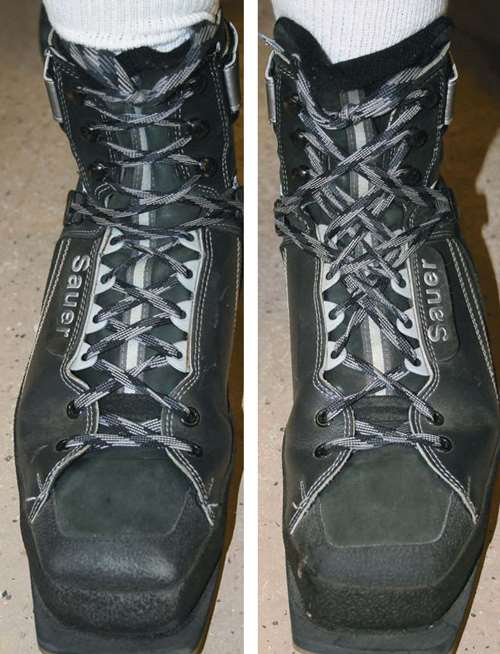
Vertical lacing was expected to have better forward and backward stability. We tested 10 national-level collegiate air rifle shooters by having each fire ten shots in the three lacing techniques. Other studies on postural stability have shown that limiting ankle motion may actually be detrimental to good postural stability. Previous research has provided mixed results with some research saying ankle bracing is better, while others say it is not. The purpose of vertical lacing was to provide ankle support and limit forward and backward motion. The study did not find a significant improvement in postural stability from one lacing technique to another. However, the vertical lacing technique did show a trend that it was less stable than the other two techniques. The difference of vertical lacing when compared with boots unlaced was 16 percent of the average distance from the mean (a measurement of range) in the forward and backward direction. While coaches and athletes may find the difference between vertical lacing and loose lacing worthy of evaluation, the actual size (0.095 mm) calls into question the real world significance of this difference. However, when the difference between winning and losing is tenths of millimeters, even a small advantage may be worth investigating.
Footwear types: We assessed three different types of footwear used by pistol shooters: Competitive international style pistol shooting shoes, normal athletic shoes and stocking feet. We tested eight national-level pistol shooters with all three types of footwear or lack of footwear. Athletic shoes showed the least benefit on postural stability, while stocking feet showed the most. Most athletic shoes have soft insoles, and it is this soft insole that may be detrimental to postural stability. In previous published research, the use of soft insoles showed less postural stability. The soft insoles may prevent the surface of the foot to sense change in foot position and delay the body’s ability to signal a change in ankle position to improve body sway. Both stocking feet and international shooting shoes showed a significant improvement over athletic shoes when assessing postural stability in this current study. Stocking feet showed a 16 percent improvement over athletic shoes in forward and backward movement. Some researchers suggest that a hard flat sole sandal or shoe would be best, and even bare feet may be the most natural way to gain optimum postural stability.
Pistol stance width: Pistol stance width was tested using 12 national-level pistol shooters using five stance widths: 12, 18, 24, 30 and 36 inches between feet. The pistol shooters shot 10 air pistol shots in each of the five stance widths. Most pistol shooting books suggest a distance between feet of shoulder width or slightly wider (about 18 inches). However, previous general postural studies showed that the average optimum stance width was only about 7 inches. Contrary to what was expected, the narrowest stance width was significantly more stable with all 12 shooters. Twelve inches was substantially better than all other stance widths. However, when using a NOPTEL optoelectronic laser system in conjunction with the force platform to monitor body stability and the shooter’s ability to hold, 12, 18 and 24 inches showed no difference in performance between each other. Only when comparing the narrower distances with 30 and 36 inches apart did performance significantly deteriorate. One may infer that the shooter could adapt to the increase in body instability to a certain threshold, beyond which, the ability to keep the pistol stable decreased.
Rifle stance width: We tested rifle stance widths with nine national-level shooters in four stance widths: 12, 18, 24 and 30 inches. The rifle shooters shot 10 air rifle shots in each of the four stance widths. As with the pistol, most rifle shooting books suggest a stance width of shoulder width or slightly wider, so a stance width 18 inches apart was expected to provide optimum postural stability. The narrowest stance width was significantly more unstable when compared to the other three stance widths. The results showed that the narrowest stance width (12 inches) produced the worst stability in both postural stability and the shooter’s ability to hold the rifle still. Comments from the shooters after the test suggest that the narrowest stance width was uncomfortable and they were unable to place their elbow or arm on their hips without tilting their hip up to an uncomfortable level. For air rifle shooting, a stance of shoulder width was best for most shooters.
Comparing postural stability to hold performance: The effects of postural stability related to different shooting performance parameters were analyzed using both rifle and pistol shooters. Postural stability was significantly related to the hold parameter among rifle shooters. The better the postural stability, the better was the hold. Thirty-two percent of the rifle shooter’s hold can be explained by postural stability, while 19 percent of the pistol shooter’s hold can be explained by postural stability. While some may not think 19 percent is a large amount, it may be very important to the national-level athlete. The ability to explain where 19 percent of the hold comes from may enable the athlete to improve on their hold in the future. If the shooter decreases their body motion, the hold may also improve.
I have been fortunate to be assisted in my research by individuals and several organizations including: Dr. Cathy Arnot, University of South Carolina; Dr. JoEllen Sefton, Auburn University; Dr. Daniel Durben, Black Hills State University; USA Shooting (Olympic Training Center) and the U.S. Army Marksmanship Unit.
To find a physical therapist close to you, please go to: aptaapps.apta.org/findapt/default.aspx?navID=10737422525&UniqueKey=














